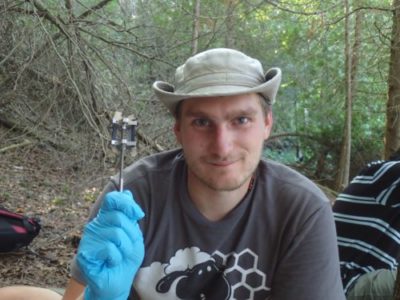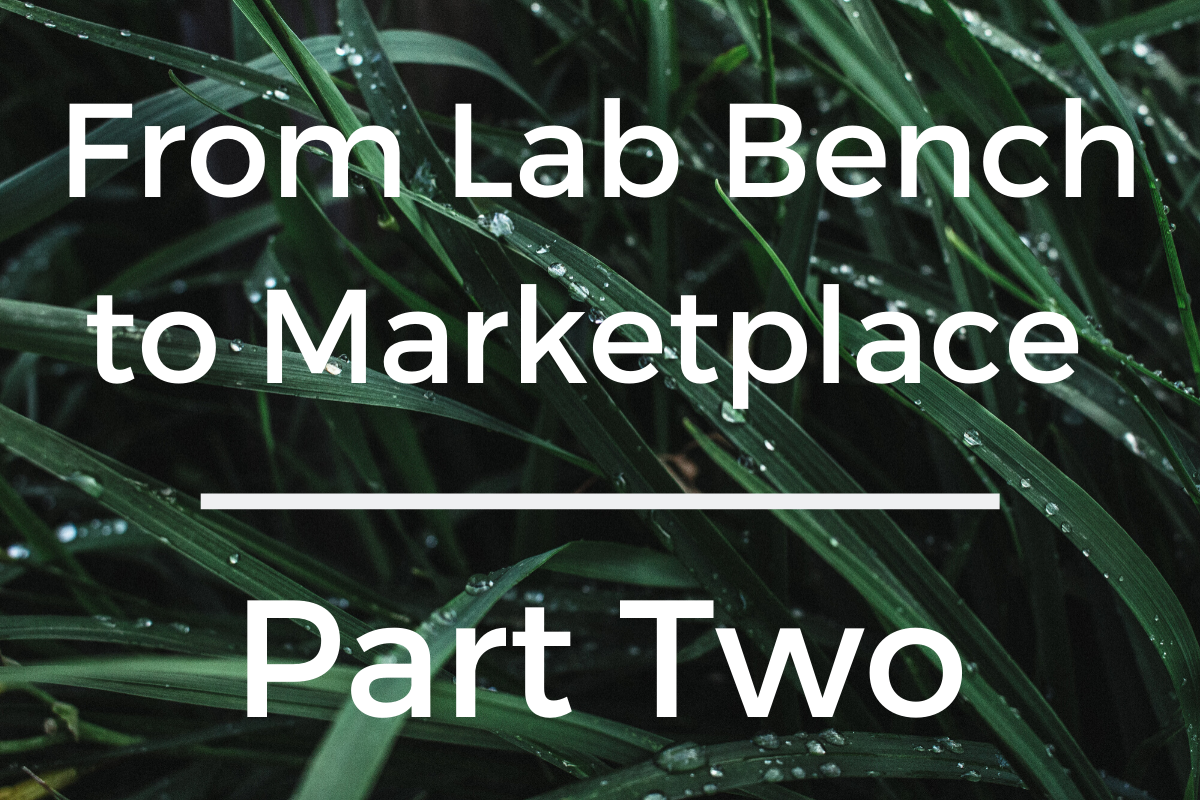How Ontario’s researchers are transforming the water sector
Taking promising research from the lab bench to the marketplace isn’t a simple journey. But with a little help, investigators at Ontario universities are commercializing their discoveries. And the technologies they’ve developed — from high-tech sensors to artificial intelligence and nano-catalysts — promise to change water monitoring, distribution and treatment, both locally and globally.
In Part Two of this mini series, learn about how the University of Waterloo’s Prof. Janusz Pawliszyn and his doctoral student Jonathan Grandy developed and advanced a solid phase micro-extraction (SPME) technology capable of extracting pesticides in concentrations of just one part per trillion, catching the attention of a German manufacturer of analytic equipment.
Redefining detection limits

Jonathan Grandy holding his thin-film SPME membranes. Copyright: Jonathan Grandy
Some pollutants, like pesticides, can have damaging effects even in very small concentrations. But how do you detect something that’s incredibly dilute?
Several years ago, the University of Waterloo’s Prof. Janusz Pawliszyn developed solid phase micro-extraction (SPME) fibres that could extract pesticides from surface water, even when they were present in concentrations of just 100 parts per trillion. Unlike earlier extraction methods, the process didn’t involve any toxic organic solvents.
It was an impressive feat, but his doctoral student Jonathan Grandy took the technology even further. Grandy developed thin-film SPME membranes that are even more sensitive, extracting pesticides in concentrations of just one part per trillion. That’s the equivalent of a grain of sand within an Olympic-sized swimming pool.
When those membranes are coupled with a portable gas chromatograph mass spectrometer — purchased with funding from OWC — researchers can detect and identify pesticides on the spot in about an hour. In the past, samples would have to be shipped to a lab, where it took 24 to 48 hours to obtain results.
GERSTEL — a German manufacturer of analytic equipment — saw potential to use the technology in their benchtop instruments. Together, Grandy, Pawliszyn and GERSTEL set about proving that what works at a small scale can also work at an industrial scale. “When you’re trying to commercialize something, reproducibility of the device you’re trying to commercialize becomes of the utmost importance,” Grandy explains.
They succeeded, and equipment containing his membranes hit the market last year. Now, as a post doc in Prof. Pawliszyn’s lab, Dr. Grandy is developing drone systems that can use the membranes to test dangerous wastewaters or monitor hard-to-reach surface waters.


